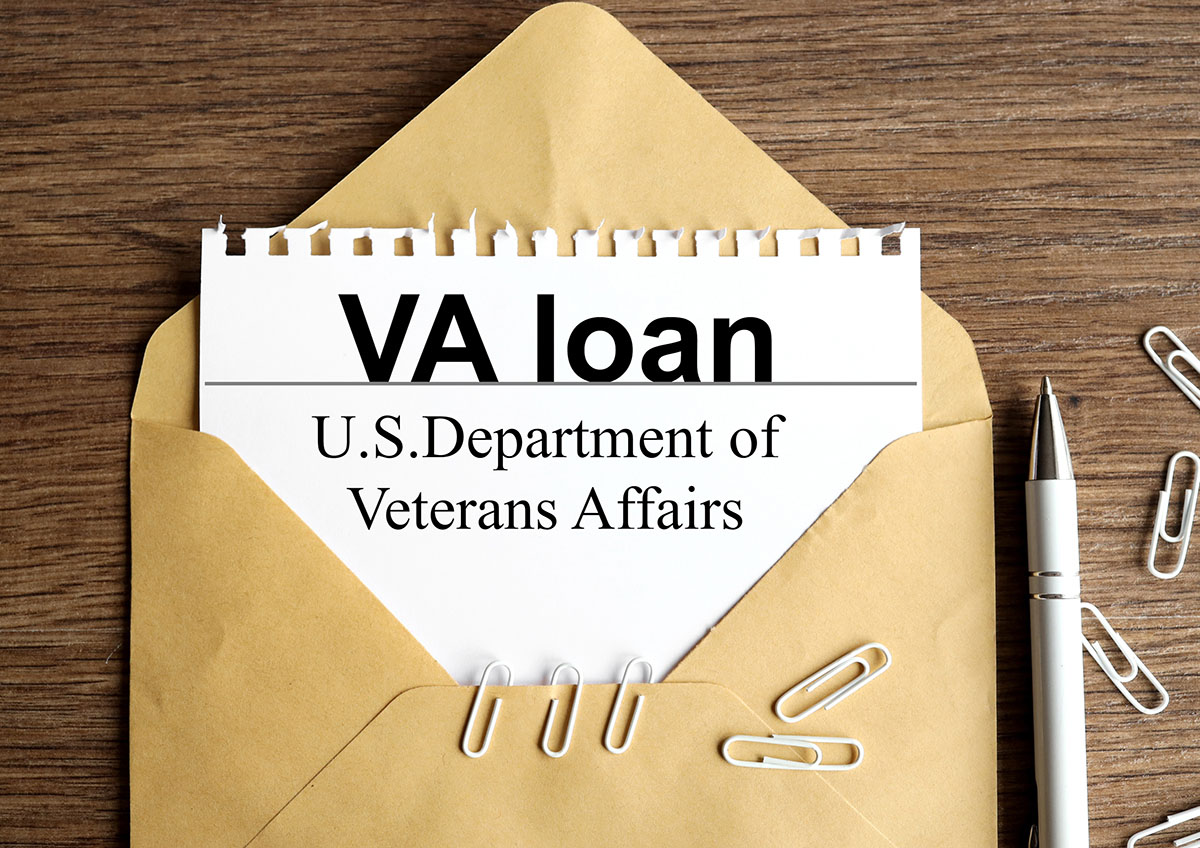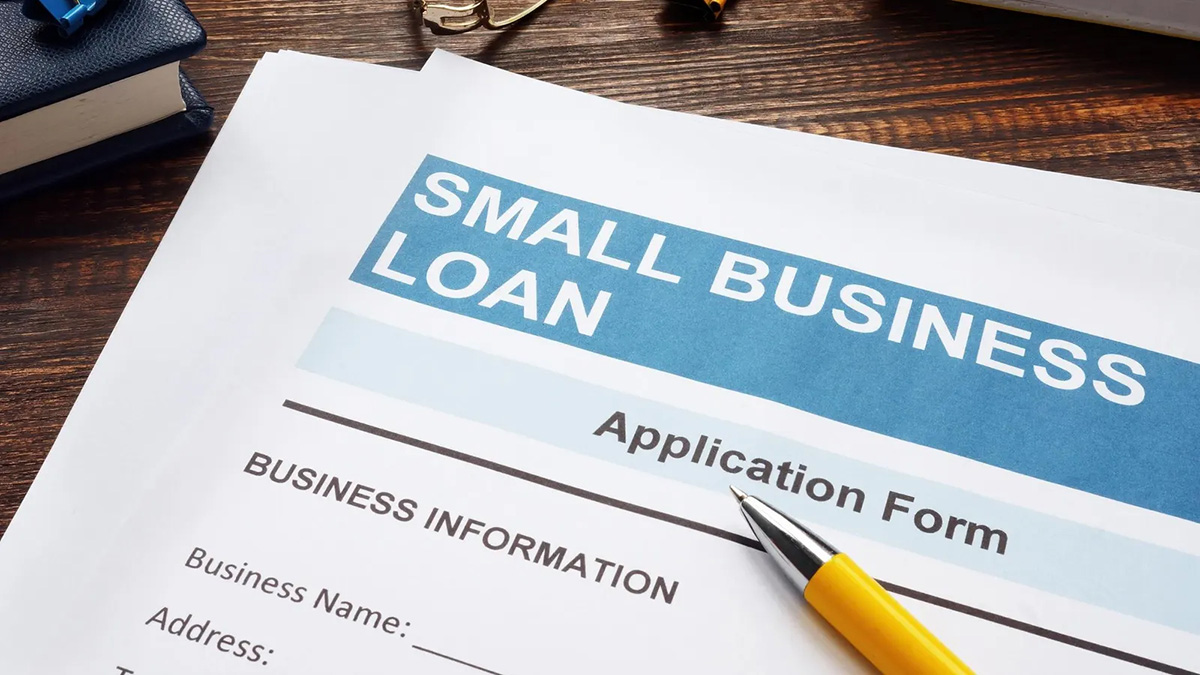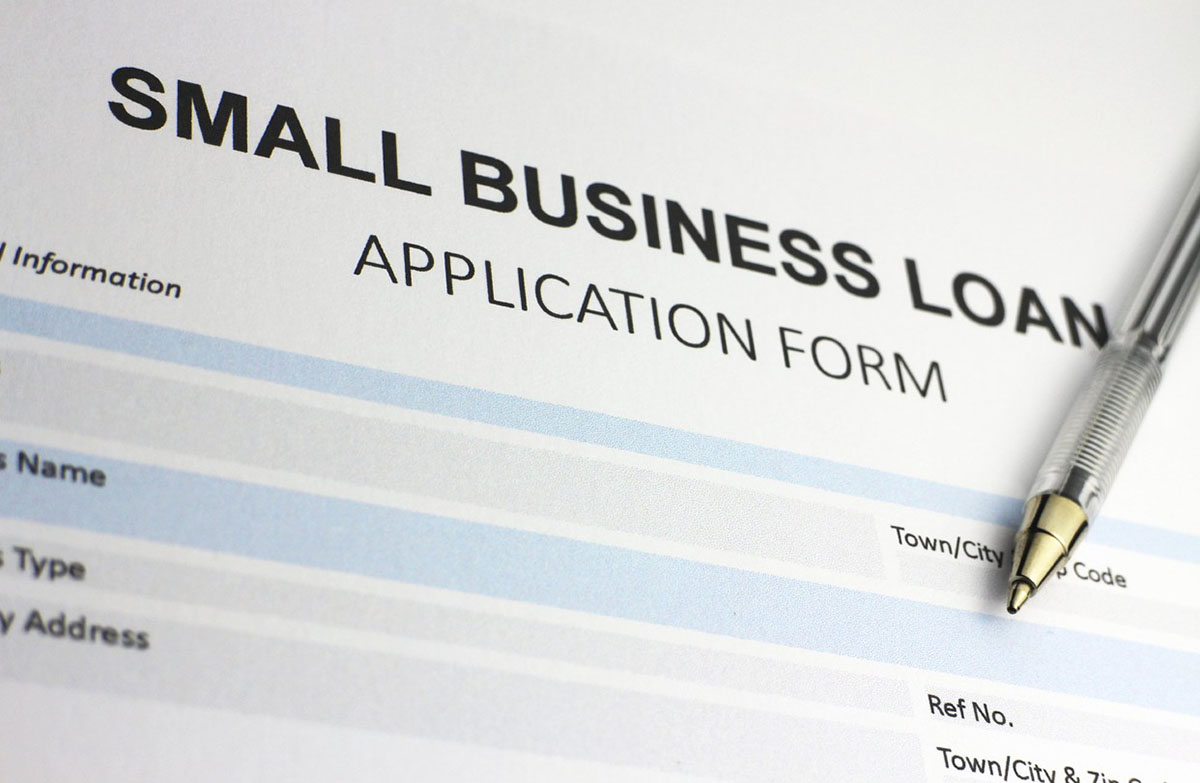

Finance
How To Apply For A VA Small Business Loan?
Modified: December 30, 2023
Learn how to apply for a VA small business loan and secure the finance you need for your venture. Simplify the process and get the funding you deserve.
(Many of the links in this article redirect to a specific reviewed product. Your purchase of these products through affiliate links helps to generate commission for LiveWell, at no extra cost. Learn more)
Table of Contents
Introduction
Applying for a VA Small Business Loan can be an excellent financial opportunity for veterans looking to start or expand their own business. The U.S. Small Business Administration (SBA) offers dedicated loan programs to eligible veterans, providing them with access to capital and resources to achieve their entrepreneurial goals.
VA Small Business Loans are designed to support veteran entrepreneurs with favorable terms, such as lower interest rates, longer repayment periods, and reduced down payment requirements. These loans can be used for various business purposes, including purchasing equipment, inventory, or real estate, as well as for working capital needs.
Before diving into the application process, it’s essential to understand the eligibility requirements and gather the necessary documents. This will ensure a smooth and efficient loan application experience. In this article, we will guide you through the steps to apply for a VA Small Business Loan, providing you with insights and tips to increase your chances of success.
Whether you’re a recently retired service member with a brilliant business idea or a seasoned veteran entrepreneur seeking additional capital, this article will equip you with the knowledge you need to navigate the VA Small Business Loan application process with confidence.
Eligibility Requirements
Before applying for a VA Small Business Loan, it’s important to ensure that you meet the eligibility criteria set by the Small Business Administration. Here are the key requirements:
- Veteran Status: To be eligible, you must be a veteran, active-duty service member eligible for transition assistance, or a National Guard or Reserve member.
- Character of Discharge: Generally, you must have received an honorable discharge from military service to qualify for a VA Small Business Loan. However, exceptions may be made for those with other than honorable discharges.
- Business Type: Your business must be for-profit and fall within the size limits set by the SBA. Certain industries, such as gambling and lending, may have additional restrictions.
- Ownership: You must own and control at least 51% of the business. If you have a business partner who is not a veteran, they will need to provide a signed statement agreeing to the VA’s terms and conditions for the loan.
- Creditworthiness: A good personal credit score (typically above 680) is typically required, although the SBA may consider other factors, such as business experience and potential cash flow, to determine creditworthiness.
Additionally, the SBA may require you to complete a prerequisite training course or obtain specific licenses or certifications, depending on the nature and location of your business.
It’s crucial to note that meeting these eligibility requirements does not guarantee loan approval. The SBA and participating lenders will also assess the overall viability and potential success of your business.
Now that you have a clear understanding of the eligibility requirements, let’s delve into the step-by-step process of applying for a VA Small Business Loan.
Step 1: Prepare Your Business Plan
One of the first and most crucial steps in applying for a VA Small Business Loan is to create a comprehensive business plan. This plan will serve as a roadmap for your business and provide lenders with valuable insights into your goals, strategies, and financial projections. Here’s what you should include in your business plan:
- Executive Summary: Summarize the key points of your business plan, including the purpose of your business, target market, competitive advantage, and financial projections.
- Company Description: Provide a detailed overview of your business, including its legal structure, location, mission statement, and an explanation of your products or services.
- Market Analysis: Conduct thorough research on your target market, industry trends, and competitors. Identify your target audience, their needs, and how your business will meet those needs.
- Organization and Management: Outline the structure of your business, introduce key team members, and highlight their relevant experience and qualifications.
- Product or Service Line: Describe your offerings in detail, emphasizing their unique features and benefits.
- Marketing and Sales Strategies: Explain how you will promote and sell your products or services. Include your pricing strategy, distribution channels, and marketing tactics.
- Financial Projections: Present realistic financial forecasts, including income statements, balance sheets, and cash flow statements. Include assumptions, such as sales growth rates and expense projections.
- Funding Requirements: Clearly state the amount of funding you are seeking and how it will be used. Explain how the loan will benefit your business and contribute to its growth.
- Exit Strategy: Describe your long-term plans for the business, whether it’s expanding, selling, or passing it on to a successor.
Take the time to carefully craft your business plan, ensuring it is well-structured, concise, and highlights the strengths of your business. It’s also a good idea to have someone familiar with business plans, such as a mentor or consultant, review and provide feedback on your plan before submitting it with your loan application.
Once your business plan is complete, you’re ready to move on to the next step of the VA Small Business Loan application process: gathering the required documents.
Step 2: Gather Required Documents
When applying for a VA Small Business Loan, you will need to provide various documents to support your loan application. These documents serve as evidence of your business’s financial health, your personal creditworthiness, and your ability to repay the loan. Here’s a list of the commonly required documents:
- Personal Identification: Provide a copy of your valid identification, such as a driver’s license or passport.
- Social Security Number: Submit your Social Security Number or Individual Taxpayer Identification Number (ITIN).
- Business Plan: Include a copy of your well-crafted business plan, as discussed in Step 1.
- Business Financial Statements: Prepare financial statements, including income statements, balance sheets, and cash flow statements, for at least the past three years. If your business is new, provide projected financial statements.
- Personal Financial Statements: Prepare personal financial statements, including details of your assets, liabilities, and net worth.
- Tax Returns: Provide signed copies of your personal and business tax returns for the past three years.
- Bank Statements: Include both personal and business bank statements for the past three to six months to showcase your cash flow and financial stability.
- Business Licenses and Permits: If applicable, provide copies of any relevant business licenses, permits, or certifications required for your industry or location.
- Legal Documents: Include legal documents, such as articles of incorporation, partnership agreements, and contracts, that demonstrate the legitimacy and ownership of your business.
- Credit Reports: Request and submit your personal and business credit reports to provide lenders with an overview of your credit history and creditworthiness.
It’s important to note that additional documentation may be required depending on your specific situation and the lender’s requirements. Assemble all the necessary documents in a well-organized manner to streamline the loan application process and avoid delays.
With your business plan and required documents in hand, you’re ready to proceed to Step 3: researching SBA-approved lenders.
Step 3: Research SBA Approved Lenders
Once your business plan is prepared and you have gathered all the necessary documents, it’s time to research SBA-approved lenders who offer VA Small Business Loans. While the SBA guarantees loans, they are typically provided by banks, credit unions, and other financial institutions. Here’s how you can find the right lender:
- SBA Lender Match: Utilize the SBA Lender Match tool on the SBA website. This tool allows you to input your business details and loan requirements, and it will provide you with a list of lenders that match your criteria.
- Local Banks and Credit Unions: Reach out to local banks and credit unions in your area and inquire whether they offer VA Small Business Loans. These institutions are often more familiar with the local market and may be more inclined to support veteran-owned businesses.
- Online Lenders: Explore online lending platforms that specialize in small business loans. These lenders may have a streamlined application process and offer quicker loan decisions.
- Networking: Leverage your professional network and seek recommendations from other veteran entrepreneurs or industry associations. Personal referrals can provide valuable insights and help you identify lenders who have experience working with veteran-owned businesses.
When researching lenders, consider the following factors:
- Loan Terms: Review the interest rates, repayment terms, and any associated fees. Compare these terms with other lenders to ensure you are getting the most favorable deal.
- Loan Size: Check whether the lender offers loan amounts that align with your funding requirements.
- Experience: Consider the lender’s experience in working with veteran-owned businesses and their expertise in your industry.
- Customer Reviews: Look for customer reviews and testimonials to gauge the lender’s reputation and customer service.
- Additional Services: Some lenders offer additional resources and mentoring programs for small business owners. These services can be advantageous in growing your business.
By carefully researching and selecting the right lender, you can find a partner who understands your unique needs as a veteran entrepreneur and supports your business growth.
Once you have identified potential lenders, it’s time to move on to the next step: completing the loan application.
Step 4: Complete the Loan Application
Now that you have researched and identified potential lenders, it’s time to complete the loan application. The loan application process may vary slightly depending on the lender you choose, but there are common elements you can expect. Here’s how to complete the loan application for a VA Small Business Loan:
- Organize Your Documents: Gather all the required documents, as discussed in Step 2, and ensure they are organized and easily accessible.
- Contact the Lender: Reach out to your selected lender to initiate the application process. The lender will guide you through the specific steps and provide you with the necessary forms.
- Fill Out the Application Form: Complete the loan application form provided by the lender. Be thorough and accurate in providing all the required information, including personal and business details, financial information, and loan requirements.
- Attach the Required Documents: Include all the necessary documents as specified by the lender. Ensure that each document is legible, well-organized, and properly labeled.
- Review and Double-Check: Before submitting the application, review all the information and documentation to ensure accuracy and completeness. Address any errors or omissions before finalizing the application.
- Seek Professional Assistance: If needed, consult with a small business advisor or accountant to review your application and ensure it meets all requirements.
Take your time while completing the application and make sure you provide all the relevant information requested by the lender. Accuracy, attention to detail, and clarity in your responses will increase your chances of a successful loan application.
Once you have filled out the loan application form and attached the required documents, submit the application to the lender for further processing. The lender will review your application and make an initial assessment of your eligibility for the VA Small Business Loan.
With your application submitted, you can now move on to Step 5: awaiting the loan approval decision.
Step 5: Submit Your Application
After completing the loan application and attaching the required documents, it’s time to submit your application to the lender. Submitting your application promptly and accurately is crucial to ensure a smooth and efficient loan approval process. Here’s what you need to do:
- Review Your Application: Before submitting your application, carefully review all the information provided. Double-check the accuracy of the details, including personal and business information, financial figures, and loan terms.
- Create Copies: Make copies of your application and all accompanying documents for your records. This allows you to keep track of the information you submitted and have a reference in case of any future inquiries.
- Submit Electronically or In Person: Determine how the lender accepts loan applications. Some lenders may have an online application portal where you can upload your documents, while others may require you to visit a branch and submit the application in person.
- Follow Up: After submitting your application, follow up with the lender to confirm that they have received it. You can inquire about the expected timeline for the review process and ask if there are any additional documents or information needed.
- Patience and Preparation: The loan review process can take time, so it’s important to be patient and prepared for any additional requests or inquiries from the lender. Be prompt in providing any requested information to expedite the process.
By submitting your application in a timely manner and ensuring its accuracy, you are actively moving forward in the loan application process. Now, all you have to do is patiently await the loan approval decision, which we will discuss in the next step, Step 6.
Remember to maintain open communication with the lender throughout the process and be responsive to any inquiries or requests for additional information. This will demonstrate your commitment and professionalism, increasing your chances of a favorable loan approval decision.
Step 6: Await Loan Approval Decision
Once you have submitted your application, the next step is to patiently await the loan approval decision. The time it takes to receive a decision can vary depending on the lender and the complexity of your application. While waiting, it’s important to stay organized and prepared for any potential follow-up inquiries from the lender. Here’s what you can do during this waiting period:
- Stay in Communication: Maintain open communication with the lender. If there are any updates or changes in your business or financial situation, inform the lender promptly.
- Respond Promptly: If the lender requests additional information or documentation, provide it in a timely manner to avoid any delays in the review process.
- Manage Expectations: Understand that the loan approval process may take time, and it is important to manage your expectations accordingly. Avoid unnecessary stress by focusing on other aspects of your business while you wait.
- Prepare for Negotiations: If the lender comes back with an offer that is different from what you expected, be prepared to negotiate. Carefully review the terms and conditions and consider seeking the advice of a small business advisor or attorney.
- Explore Other Funding Options: While waiting for the loan approval decision, it is a good idea to explore alternative funding options as a backup plan. Research grants, crowdfunding, or alternative lenders to ensure you have other avenues to pursue if needed.
Remember that the loan approval decision is ultimately at the discretion of the lender. They will evaluate your application, creditworthiness, business plan, and financial stability to determine if you meet their loan criteria. While waiting for the decision, remain optimistic and continue to focus on growing your business.
Once the lender has made a decision, they will notify you of the outcome. If your loan application is approved, congratulations! You can move on to the final step, Step 7: closing the loan. If, for any reason, your loan application is not approved, don’t be discouraged. Take the opportunity to learn from the experience and explore other funding options.
Stay patient, maintain open communication, and keep your business objectives in mind as you await the loan approval decision. Soon, you’ll have the clarity you need to move forward with your business goals.
Step 7: Close the Loan
Congratulations on receiving loan approval! Now, it’s time to move on to the final step: closing the loan. The loan closing process involves signing the necessary documents and finalizing the details of the loan agreement. Here’s what you need to do:
- Review the Loan Offer: Carefully review the terms and conditions of the loan offer from the lender. This includes the interest rate, repayment schedule, fees, and any other specific requirements.
- Seek Professional Advice: If needed, consult with a lawyer or small business advisor to ensure you fully understand the terms of the loan agreement. They can help clarify any confusing or complex language in the documents.
- Provide Additional Documentation: The lender may request additional documents or information before closing the loan. Be prepared to provide any necessary documentation promptly.
- Sign the Loan Agreement: Once you are satisfied with the terms and have met all the lender’s requirements, sign the loan agreement. This legally binds you to the terms and conditions outlined in the agreement.
- Arrange for Loan Disbursement: Coordinate with the lender to arrange for the disbursement of funds. Discuss the preferred method of receiving the funds and any specific instructions for the disbursement process.
- Keep Copies of the Documents: Make copies of all the signed documents and keep them in a safe place for your records.
- Monitor Repayment Obligations: As the loan repayment period begins, ensure you have a system in place to track payments and meet your repayment obligations on time. This will help you build a positive credit history and maintain a good relationship with the lender.
Remember, closing the loan marks the beginning of a financial commitment. Be diligent in managing your finances and meeting your repayment requirements to maintain a healthy financial standing.
If you have any questions or concerns after closing the loan, don’t hesitate to reach out to your lender for clarification or assistance. They are there to support you throughout the repayment process and can provide guidance if you encounter any challenges along the way.
With the loan closed, you can now focus on implementing your business plans and utilizing the funds to grow and expand your venture. Congratulations on securing the financing you need to take your business to new heights!
Conclusion
Applying for a VA Small Business Loan can be a significant step towards realizing your entrepreneurial dreams as a veteran. By following the step-by-step process outlined in this guide, you can navigate the loan application process with confidence and increase your chances of success.
Starting with understanding the eligibility requirements, organizing your business plan, gathering the necessary documents, researching SBA-approved lenders, completing the loan application, awaiting the loan approval decision, and finally closing the loan, each step plays a vital role in ensuring a smooth and successful loan application experience.
Throughout the process, it’s important to maintain open communication with lenders, seek professional advice when needed, and be patient. Remember that the loan approval decision is ultimately at the discretion of the lender, and there may be alternative funding options available if your application is not approved.
Once you secure the loan, make sure to manage your finances responsibly and honor your repayment obligations. This will help you establish a positive credit history and maintain a healthy relationship with the lender.
As a veteran entrepreneur, your dedication, skills, and leadership qualities position you for success in the business world. The VA Small Business Loan program provides an opportunity to access the capital and resources needed to grow your business and contribute to the economy.
Whether you’re starting a new venture or expanding an existing one, leverage the benefits of the VA Small Business Loan program and seek out the support and resources available to help you on your journey. Remember, with determination and perseverance, you can achieve your entrepreneurial goals and make a significant impact in the business world.














